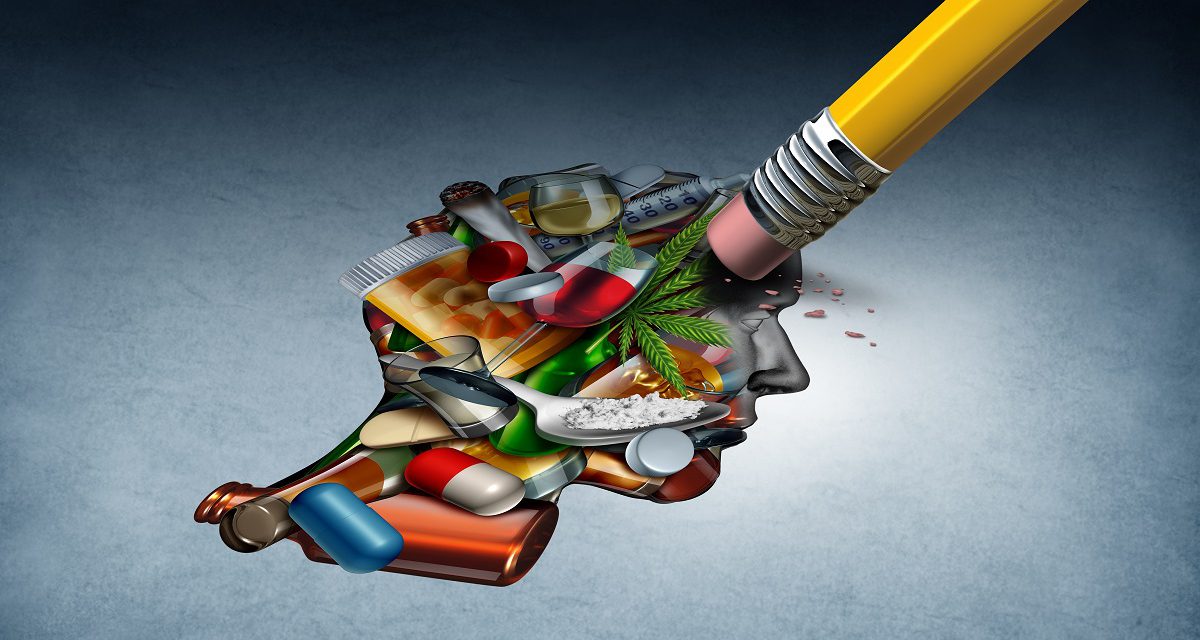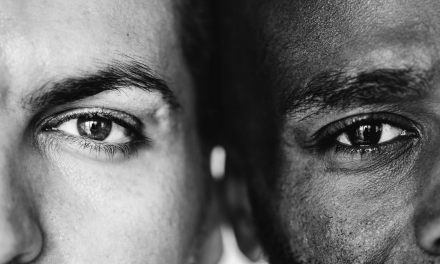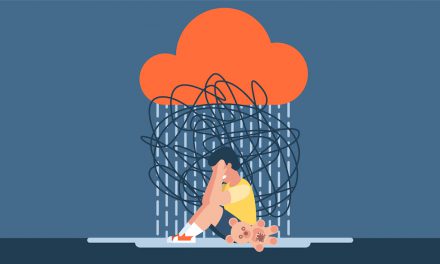Early months of the COVID-19 pandemic brought an 18% increase nationwide in substance use overdoses compared with the same months in 2019. A year after the initial outbreak, substance use has continued to increase due to pandemic-related stress including financial instability, job loss, homelessness, and isolation. The Centers for Disease Control and Prevention (CDC) found 13% of Americans reported starting or increasing substance use to cope with stress or emotions related to COVID-19.
A WalletHub study examining national drug abuse, rehab, and arrest data scored Missouri with the overall worst drug problem. The study considered 22 metrics and focused on three main data categories: drug use and addiction, law enforcement issues, and drug health issues and rehab. In these areas, Missouri scored 18th in drug use and addiction, 1st in law enforcement issues, and 16th in lack of health support and rehab opportunities. The Pitch KC has a breakdown of the study here.
Along with substance use concerns, Missouri has seen a rise in symptoms of anxiety and depressive order in adults. In October 2020, 38.6% of adults in Missouri reported these symptoms compared to 37.7% of adults nationally. These Missouri adults (27.3%) also reported needing counseling or therapy but not receiving it within the last month, compared to the U.S. average (22.5%). As Americans nationwide are desperately searching for mental health services and emotional relief, providers are becoming overwhelmed and are struggling to keep up with demand.
The rise of substance use and the opioid epidemic, as well as increased reports of mental health symptoms, are national health concerns. However, these sensitive topics carry stigmas which can interfere with the motivation to seek or receive treatment. Individuals struggling with substance use disorder (SUD) and addiction face negative judgements regarding their circumstance, behavior, or appearance. However, these factors are often a product of or influenced by their struggle with substances. SUD and addiction also cooccur with mental health issues; if someone needs treatment for one, they will likely require treatment for the other. For people who use substances or face mental health issues, harsh judgements or assumptions from family, peers, providers, and others can cause shame and distrust and may prevent someone from seeking help or continuing treatment. Understanding substance use and addiction as a disease, rather than a personal failure, is necessary to breaking down stigmas surrounding substance use in health care.
The Toll Substance Use Takes
I lost my oldest sister to complications from opioid use seven years ago. Because of the stigma surrounding drug use in our rural hometown and the strains put on our family due to her addiction, I have only just begun to grapple with my grief surrounding her loss. Throughout her hospitalization, hospice stay, and even for years after her death I held animosity towards her for the harm she caused me and our family. I was furious with her for hurting herself and putting our family in danger. I was angry at her for stealing, lying, sneaking around, and taking advantage of our parents’ generosity. I was disheartened by her lack of presence in her children’s lives and disappointed by her seemingly unwillingness to meet her full potential. She had recently returned to school to become a surgical technician; I had never felt prouder of her and more hopeful for her recovery until I discovered a bag of syringes she snuck home from work to use recreationally.
My mother, a far more compassionate and spiritual woman, took a different route processing her grief. Throughout my sister’s addiction, our mom played the role of authoritarian, refusing to enable my sister nearly to a restrictive and cold fault. Her desperation to intervene and save my sister meant drawing firm boundaries and learning to say no. She feared every late phone call we received, anxious it would be the call letting us know about an overdose, and refused to play a part in allowing that to happen. Cutting off access to certain resources seemed like an act of love, such as refusing to send money believing it would be spent on drugs and only worsen the problem. To my sister, though, that money was a necessity, even if it was for another dose – especially one to stop painful withdrawal symptoms from settling in.
During my sister’s final weeks and after her death, our mother transformed from a confused, frustrated, heartbroken parent to an empowering advocate for addicts and their support systems. She immersed herself in Nar-Anon meetings and programs, the support group counterpart to Narcotics Anonymous (NA) for family and loved ones, and eventually climbed the volunteer ranks to become the head of her local Kansas chapter. Through her advocacy work helping families understand the nature of addiction as a disease and navigate how to show compassion for addicts without perpetuating the problem, I learned how to let go of the anger towards my sister.
In one of many back-and-forth trips to the hospice room, I walked in on my mother speaking to my sister in one of her last lucid moments. My mom softly whispered a gentle mantra reminding her that the addict self is not the same as the self and that while one physical body may be perishing, the disease and all its problems would with it. The spiritual being within my sister, the true self, full of personality and light and free of addiction or guilt, would continue in another form. Though spirituality differs between everyone, the recognition of a stark difference between the addict identity and the true identity of a loved one is vital to understanding addiction, breaking down stigma, and supporting those struggling with substance use in their journey to recovery.
The Danger of Stigmas
The combination of pandemic-related stress, increased substance use, and worsened mental health issues can be fatal. According to the American Psychological Association, those with substance use disorder (SUD) are more likely to develop COVID-19 and experience worse outcomes including higher risk of hospitalization and mortality. The American Medical Association reports SUD as deadly with more than 40 states seeing increases in opioid-related mortality in December 2020. Because these issues co-occur, treatment and recovery must prioritize whole-person care.
Stigmas surrounding substance use and mental health often alienate or shame individuals who are struggling rather than motivate them to seek help. Intense negative feelings like shame and guilt often increase the urge to self-medicate as a coping mechanism, furthering the cycle of substance dependence. While navigating relationships of any kind with someone who is struggling with these issues may bring negative interactions and emotions, it’s important to remember that they are also a victim. Part of stigma reduction for those serving as support systems is to seek outlets for these difficult feelings and help navigate changes in relationship dynamics.
As someone who has lost a family member to substance use, I constantly questioned why someone would continue to put themselves and others through the pain of addiction and its consequences and eventually assumed it to be personal. Unlearning the stigmas I knew surrounding substance use and addiction, particularly opioid use in my experience, was necessary to my own grieving and healing process as well as eventually assisting others in their recovery.
In my experience speaking at outpatient recovery clinics, including First Step in Lawrence, Kansas where my sister was treated, the most common feedback I heard was the lack of support and understanding among family and friends. Addicts often felt ashamed to ask for help because they were raised to be strong enough to never need it, or were taught that substance use, even to a severe extent, was normal and to not be in control was a personal failure to be ashamed of. On weekly visitor nights, families and loved ones would attend meetings to celebrate the addicts’ progress and learn more about addiction and mental health’s toll on an addict as well as their support system. Education and support groups work in tandem to break down how addiction develops, how mental health intersects, how relationships and behaviors change, and how to overcome these challenges to develop new, healthier habits and behaviors.
How Does Addiction Develop?
According to the Substance Abuse and Mental Health Services Administration (SAMHSA), SUD occurs when recurrent use of alcohol and/or drugs causes clinically significant impairment, including health problems, disability, and failure to meet major responsibilities at work, school, or home. SUD often coexists with mental health issues which can worsen health symptoms and cause challenges in recovery. The Mayo clinic underscores that substance addiction is a disease affecting the brain, and that an addict may continue using a substance despite the harm it causes.
Substance use can start with experimental or recreational use in social situations, such as vaping among youth or binge drinking and taking party drugs among young adults in college. Peer pressure or social culture, especially among teens and young adults, contribute to developing SUD. Opioids are often abused after someone obtains them through a prescription, usually for a relative or themselves. People who experience a serious injury and receive opioid painkillers are prone to becoming addicted after prolonged use leads to increased tolerance. Over time, more use means a higher tolerance and increased usage to gain the same effect or any effect at all. Because of this, opioid painkillers have a higher risk and cause addiction more quickly than some other substances.
As someone develops SUD, their symptoms make it clear: maintaining the high is the priority. When an addict abruptly stops using a substance, they may become severely ill, lose consciousness, experience seizures, among other withdrawal symptoms. To avoid this, the disease wires the body and brain to prioritize the substance. An addict experiences intense urges and cravings for the feeling of being high or drunk, prioritizes maintaining the substance even if it is unaffordable, and fails to meet social and work obligations because of substance use. People with SUD continue to use despite physical, psychological, or financial issues and may even act out of character such as steal or do other risky activities to obtain the substance. Someone has severe SUD if they fail attempts to stop using and experience withdrawal symptoms when they do.
People experiencing problems with substance use may miss school or work or show a drop in their performance and appearance. Physical health problems, besides withdrawal symptoms, include lack of energy or motivation, significant weight loss or gain, red eyes, bruises especially along veins, and poor dental hygiene. Changes in behavior are especially common, including being secretive about their location or belongings, drastic changes in relationships, and money issues including requests for money without explanation, stealing money, or stealing items to pawn. A full list of symptoms and signs of substance use is available here.
Everyone Plays a Role in Recovery
I vividly remember the night my sister stumbled into our childhood home, speech slurred more than usual. She always looked a bit disheveled, like her makeup had been slept in for a night or two, but her skin was gray and her eyes were glazed far worse than usual. As she tripped into the doorway and out of her shoes, she muttered over and over how cold she was, begging me in barely-English to grab her some socks, eventually melting to the kitchen floor where she began to seize and eventually became unresponsive. Terrified, I hollered for my parents to come. As she was rushed to the hospital, I tearfully scribbled a letter begging her to get clean so I never had to fear losing her again. When I discovered her still using opioids months after an ambitious promise to make good on my request, and especially after continuing to steal from and lie to our family, any fear of losing her became anger and resentment toward her decision to inflict pain.
The mistrust created a strain in our relationship that was too difficult to mend before I lost her. Substance use disrupts the dynamic of a support system and can turn anyone into a villain. One of the most dangerous stigmas surrounding addicts, especially due to the behavioral changes, is that they are inherently bad and do these things intentionally. It is crucial to understand that those struggling with SUD are suffering from a disease they cannot overpower, and more importantly, that they cannot change until they are ready. No amount of shaming or guilting an addict about their actions will motivate them to pursue recovery.
No one chooses to be an addict, no one wants to be an addict, and anyone can become an addict. Addiction is born from several factors and circumstances and is perpetuated by necessary increased use over time, social pressures, and emotional triggers. It’s no surprise we are seeing increased rates of substance use during a pandemic where so many people are struggling at various intersections of financial instability, emotional stress, and lack of support.
Harmful stigmas surrounding addiction prevent people from seeking care, trusting providers, and feeling supported. Addicts often internalize stigmas and blame themselves for their addiction-driven actions and may need help working through these feelings to better understand their disease. The more they feel supported by trustworthy people, the more likely they are to find the motivation to continue seeking recovery.
Honest but judgment-free conversations about risks of addiction are necessary while navigating opioid use to work towards preventing substance abuse. Support systems as a whole – providers, family, friends, therapists – have a responsibility to educate themselves about substance use and its consequences to better the chances of intervention, prevention, and reduction of SUD.
Recovery Is Not One Size Fits All
Substance use recovery often takes a multifaceted approach that combines various methods including guided support programs, such as the 12-step program used in Alcoholics Anonymous (AA) and Narcotics Anonymous (NA), and peer support, such as group counseling meetings, with lifestyle changes. Changes may include healthier eating habits, increased exercise, introduction of new hobbies to replace habits related to substance use, new social environments to replace ones that may have triggers (such as bars), and therapy or other mindfulness work. In some cases, Medication Assisted Treatment (MAT) is necessary.
The Health Care Collaborative (HCC) of Rural Missouri and its Live Well Community Health Centers offers a grant-funded Rural Community Opioid Response Program (RCORP) with peer counselors who work locally with support groups including NA, AA, Celebration Recovery, and more. Kayla Schmidt, risk management coordinator for HCC and supervisor of RCORP, said that the peer counselors have the firsthand experience to best help those who are struggling. “I will never be able to understand someone’s story like they do,” she said. “They’re able to get patients resources they need because they’ve walked in their shoes.”
Listen to our interview with Kayla Schmidt about the RCORP grant and learn more about the RCORP program.
For individuals struggling with substance use or for more information, contact HCC at 660.259.2440 and ask to be transferred to an RCORP peer counselor. Peer counselors can also be contacted directly for support or more information about group counseling; Will Jordan (660.251.3793) oversees NA group meetings and Tamara Lane (660.251.8016) oversees the women’s small group for Celebration Recovery. For immediate or emergency support regarding substance use and mental health, call the SAMHSA 24/7 hotline at 1.800.662.HELP (4357).
Recovery is possible. Though I lost my oldest sister to opioid addiction, I watched another sister recover from the same disease to live a happy, healthy, fulfilled life. Through support groups, recovery programs, NA sponsorship, and consistent personal lifestyle changes, I have watched her become a self-sufficient entrepreneur, a loving wife to a supportive partner, and a radiant mother to a healthy baby boy. My oldest sister’s death nearly tore our family apart at times but through understanding her disease and journey and by advocating for others, it has also brought us back together even stronger. Once I and the rest of my family educated ourselves about addiction, found our own support for the frustrations, pain, and mistrust we felt, and showed compassion for the addicts in our lives, recovery became much easier – for everyone.








